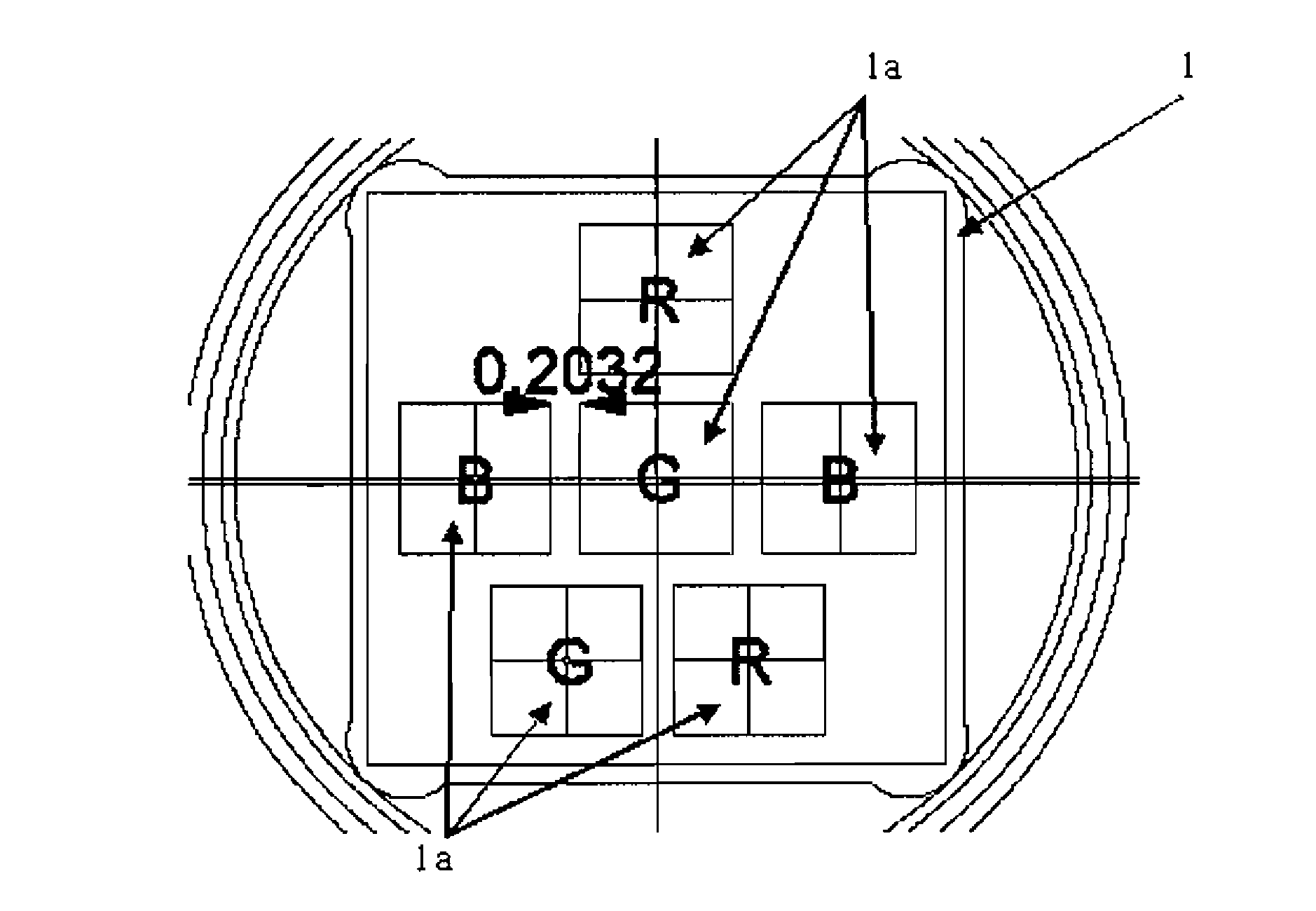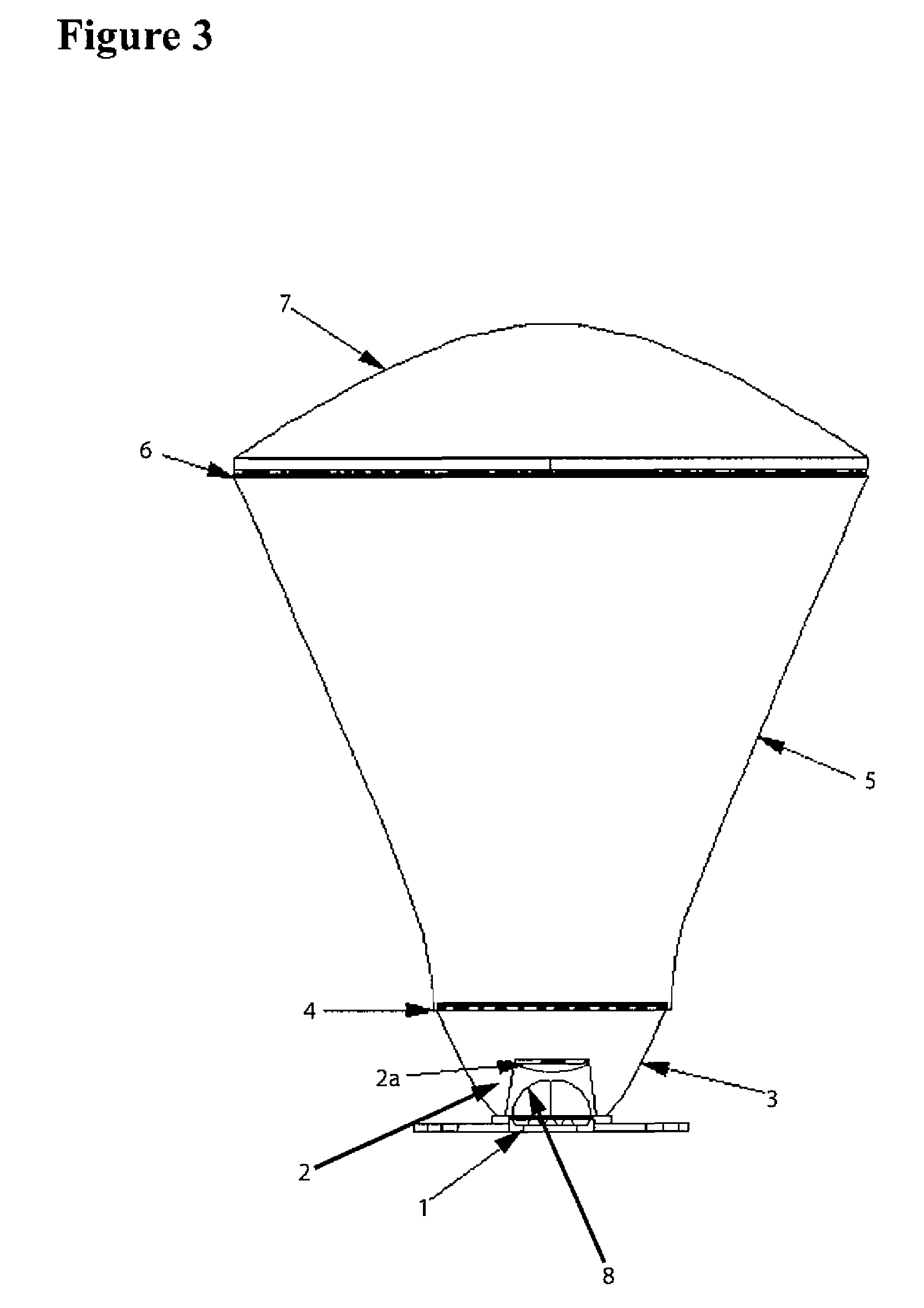Multi-primary LED collimation optic assemblies
- Summary
- Abstract
- Description
- Claims
- Application Information
AI Technical Summary
Benefits of technology
Problems solved by technology
Method used
Image
Examples
Embodiment Construction
[0045]Traditional LED optics are rotationally symmetric and do not produce a light beam having narrow collimation, nor a light beam having sufficient color uniformity for some applications. The present invention is directed to an optical assembly which performs the dual function of collimation and color homogenization or mixing. The optical assembly disclosed is specifically tailored to match the placement of the solid-state emitters making up the light engine or light producing element. Preferably, the light engine is the 6-LED assembly shown in FIG. 1. The red LEDs are driven with 4.8 volts / 0.35 amperes; green LEDs are driven with 7.4 volts / 0.35 amperes; and blue LEDs are driven with 7.9 volts / 0.35 amperes. The individual LEDs produce a relatively wide lambertian 130° beam angle.
[0046]FIG. 3 shows a first embodiment of the entire assembly, having the following features designed to enhance the collimation and mixing of light, with each of these features discussed in greater detail ...
PUM
 Login to View More
Login to View More Abstract
Description
Claims
Application Information
 Login to View More
Login to View More - R&D
- Intellectual Property
- Life Sciences
- Materials
- Tech Scout
- Unparalleled Data Quality
- Higher Quality Content
- 60% Fewer Hallucinations
Browse by: Latest US Patents, China's latest patents, Technical Efficacy Thesaurus, Application Domain, Technology Topic, Popular Technical Reports.
© 2025 PatSnap. All rights reserved.Legal|Privacy policy|Modern Slavery Act Transparency Statement|Sitemap|About US| Contact US: help@patsnap.com



